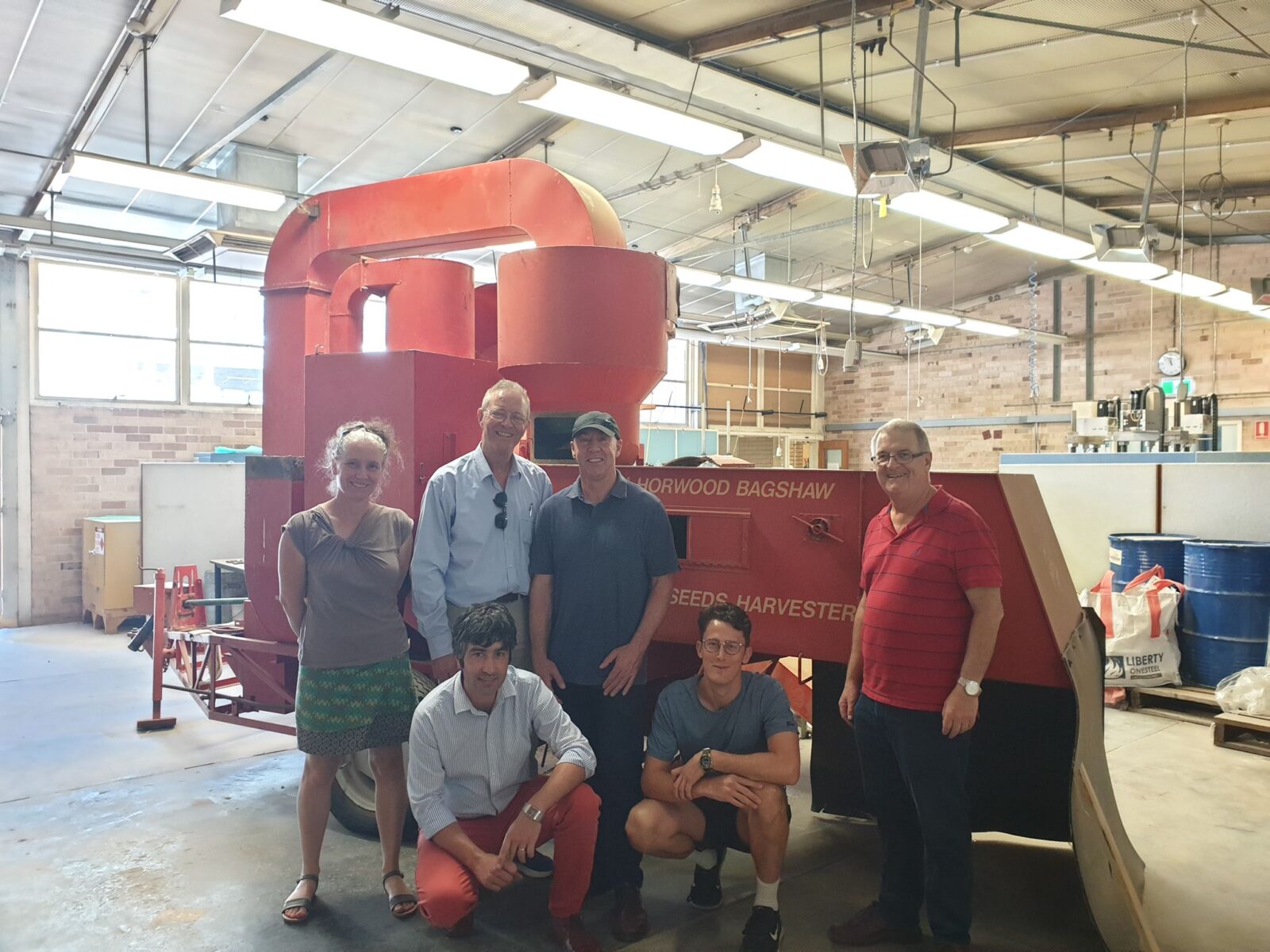Amidst the John Deeres, New Hollands and Massey Fergusons, remains a not-so-timeless piece of machinery finally ready to be reborn in the 21st century.
The Horwood Bagshaw Clover Harvester is an oldie, but calling it a goodie would be a stretch. It’s still the most commonly used equipment for subterranean (sub) clover seed harvesting, but its production ceased in the early 1990s. As a result, sub clover producers are harvesting with 30-year-old machinery fitted with outdated technology.
Building a profitable and sustainable future for the pasture seeds industry
The AgriFutures Pasture Seeds Program aims to improve the production and processing efficiency and profitability of the pasture seeds industry. Its project, Building new technologies for sustainable and profitable sub clover seed harvesting, is now in phase two.
In 2022 the project trialled several engineering modifications and new technologies for sub clover seed harvesting, with some proving more successful than others.
Dr Phil Nichols, Associate Professor at the University of Western Australia’s School of Agriculture and Environment and original project lead, said widespread concerns regarding the Horwood Bagshaw (HB) machines and the sub clover harvesting process mean new technology is vital.
“The main issues facing growers with the HB machines are that they’re very inefficient and you can’t get spare parts for them anymore,” said Dr Nichols.
Dr Nichols also highlighted industry environment concerns centering on the harvesting process due to the high level of fuel usage and the risk of erosion.
“Because harvesting sub clover seeds requires the seeds to be brought to the surface, multiple passes with machinery are needed which is not only very fuel inefficient but this process is also done during the crispy summer months which can leave the land prone to erosion,” he said.
Learning from other industries
Developing an entirely new machine was not viable for the size of the industry so the team instead opted to adapt harvesting technology from other industries.
“We looked at a range of options from other industries that harvested seeds from the ground but it was a peanut harvester that stood out to us,” said Dr Nichols.
“Peanuts are a legume that also produce their pods underground and after a full engineering analysis we concluded that a peanut harvester might have the best application for sub clover.”
While phase two of the project is currently trialling modifications to a peanut harvester, the team used phase one to identify short-term improvements that could be used to modify the existing sub clover harvesting process.
“We found that some growers have been doing things like linking their machines together to speed up the process and some have attached bins to the side of the machine to increase the bin size,” Dr Nicols said.
“One of the common things we found in the southeast district of South Australia was the use of a street sweeper-style brush that rotates in front of the machine and froths up the surface a bit more.”
Phase one of the project revealed new technology is sorely needed to advance the pasture seeds industry. A factsheet highlighting the most effective improvements to the HB was developed, along with the Final Report covering all the project outcomes. Over the next three years the project team will switch focus to trialling different modifications to a peanut harvester.
Reborn and robust technology
Dr Andrew Guzzomi, current project lead and Associate Professor at the University of Western Australia’s School of Engineering, explained that by adapting technology from a peanut harvester, the efficiency and sustainability of the sub clover harvesting process can be significantly improved.
“At the conclusion of the first project we identified that, on average, across the whole industry, the sub clover harvesting process requires about eleven passes of machinery which is phenomenally high compared to other modern harvesting methods,” said Dr Guzzomi.
“What we are aiming for is something similar to the peanut industry, where you only need two passes. By using a peanut digger approach as a first step to getting the subterranean burrs out of the ground and then a subsequent step using a modified modern combine harvester, we believe we can significantly improve the overall efficiency of the process.”
With an ageing grower population and a limited pool of interested successors, Dr Guzzomi believes the pasture seeds industry requires urgent technological updates for production to remain viable.
“The interest of the next generation is declining due to the hot, laborious, and slow harvesting process in an industry that is plagued with unreliable and old machinery that simply does not compare to the modern harvesting processes we see in other industries,” he said.
“By modernising the harvesting process we can secure the future of the industry by attracting more people to it, ensuring a sustainable future for pasture seeds production.”
In a pivotal step forward, the team is gearing up for a significant milestone this September. An interstate visit to South Australia will see hands-on workshops held between AgriFutures Pasture Seeds Program and growers, project updates shared, and new technologies introduced to the industry.
The project team believe their efforts will not only bring innovative technology to the forefront, but changes to agronomy will also be required – heralding a more efficient, sustainable future for the pasture seeds industry and the sub clover harvesting process.
Keep up to date with the latest research, events and program activities subscribe to AgriFutures Pasture Seeds Program here










